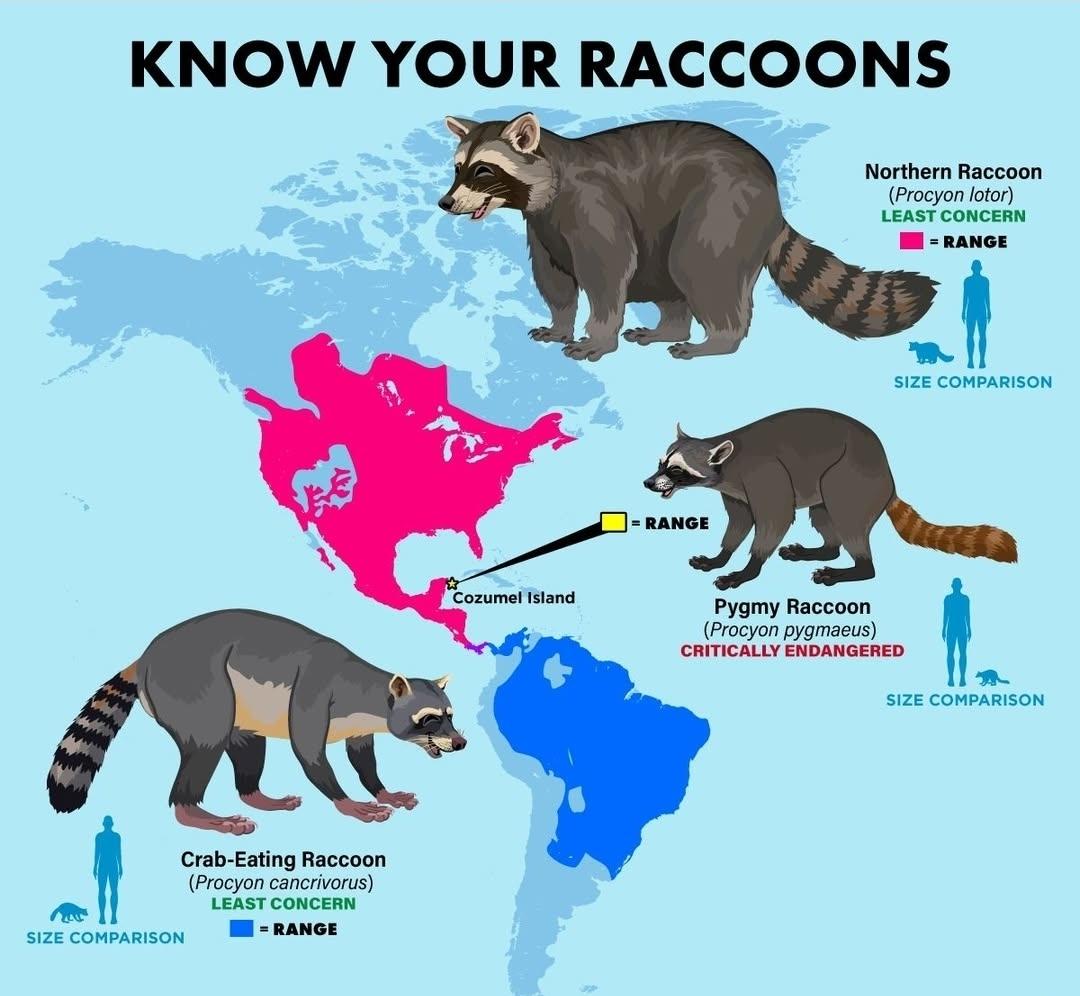Raccoon Habitat Distribution Map


Marcus Rodriguez
Historical Geography Expert
Marcus Rodriguez specializes in historical cartography and geographic data analysis. With a background in both history and geography, he brings unique...
Geographic Analysis
What This Map Shows
This visualization displays the habitat distribution of raccoons across various regions, highlighting their presence in urban, suburban, and rural environments. It provides valuable insights into where these agile creatures thrive, revealing their adaptability to different landscapes. Raccoons, known for their distinctive black facial markings and dexterous front paws, are more than just common wildlife; they are fascinating creatures that have successfully integrated into human-dominated areas.
Deep Dive into Raccoon Ecology
Raccoons (Procyon lotor) are highly adaptable mammals native to North America, and their distribution is influenced by a variety of ecological factors. These nocturnal animals have a diverse diet, which includes fruits, nuts, insects, and even discarded human food. Interestingly, their omnivorous nature allows them to thrive in a range of habitats, from dense forests to bustling urban centers.
One of the most remarkable aspects of raccoon behavior is their foraging technique. They are known for their dexterous paws, which they often use to manipulate objects, demonstrating a level of problem-solving intelligence that is quite rare in the animal kingdom. This ability enables them to access food sources that other animals might overlook.
Raccoons are also known for their social structures. While they can be solitary, they often form loose family groups, especially during the breeding season. This social behavior can influence their habitat choices, as areas with ample food and shelter will attract larger groups. In urban environments, it is not uncommon to see raccoons rummaging through garbage bins, showcasing their remarkable adaptability to human presence.
Their habitat selection is also closely tied to environmental factors such as water sources and vegetation cover. Raccoons are generally found near rivers, streams, and ponds, where they can easily access water and a variety of food options. Furthermore, they prefer areas with ample cover, such as shrubs or trees, which provide safety from predators and a place to den. This makes them particularly prevalent in suburban areas where natural spaces intersect with human development.
Regional Analysis
The map reveals distinct regional patterns in raccoon populations across North America. In the eastern United States, raccoons are particularly abundant due to the dense forests and suburban sprawl that provide a rich habitat. States like New York and Pennsylvania have seen significant raccoon populations, taking advantage of the urban-rural interface where food sources are plentiful.
Interestingly, the populations tend to be lower in the arid regions of the western United States, such as parts of Nevada and Arizona, where the lack of water sources and dense vegetation limits their habitat. However, even in these areas, raccoons can be found in proximity to rivers and urban centers, showcasing their resilience.
In Canada, the raccoon population is more concentrated in southern regions, particularly around the Great Lakes and urban areas like Toronto. This tendency highlights the influence of urbanization on wildlife distribution, as cities provide abundant food sources and fewer natural predators. Conversely, northern regions of Canada see fewer raccoons, as the harsher climate and limited resources create challenges for their survival.
Significance and Impact
Understanding raccoon distribution is not just an academic exercise; it has real-world implications. As raccoons continue to thrive in urban environments, they can become vectors for disease, including rabies and raccoon roundworm. This poses a public health concern, particularly in areas where raccoon populations are dense.
Moreover, their adaptability raises questions about wildlife management and conservation. Have you ever wondered how urbanization affects local wildlife? The presence of raccoons in cities can lead to conflicts with humans, from property damage to traffic incidents. As such, effective management strategies are crucial to balance wildlife conservation with public safety.
Current trends suggest that as urban areas expand, raccoons will likely continue to adapt and thrive. This adaptability poses both challenges and opportunities for wildlife managers, who must consider the ecological implications of raccoon populations in urban settings. Looking ahead, monitoring these trends will be essential for ensuring that both raccoon populations and human communities can coexist harmoniously.
Visualization Details
- Published
- October 13, 2025
- Views
- 36
Comments
Loading comments...